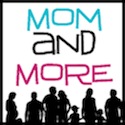Fast forward to today and my kids sometimes can't believe I lived in such an archaic time. But I evolved and adapted. I've become quite tech-savvy and the go-to gal when my own children and friends are having a computer problems. When it comes time to hook up the television, cable, video game system and dvd player and make each one of those components work TOGETHER, the cables are handed over to me and I go to town. When I decided to network my home computer system, I shunned the technician and did it myself and later upgrading everything to a wireless home network. Yes Virginia, I can open up my computer and install components myself.
When our family first jumped online 12 years ago, we had a dial-up internet connection. That meant if you were online, you couldn't use the phone. You could do one but not both. When DSL became available, I immediately signed up. While faster, it certainly came with its own host of problems. I can't count how many times the internet was "down". It was especially frustrating when you were in the middle of something and the modem began flashing its ugly red connect light. Making the switch to cable cleared some of that up as well as correcting the satellite television problems we had every time there was a storm when the "acquiring satellite signal" message would flash across our television screen every time there was a gust of wind. No longer did we have to troop outside with the broom to dust of the dish after a snowstorm so we could watch tv.
Our family has certainly come a long way. But are we all the way there? While everything works, is it really "the best" that's out there? For phone, television and internet, do I have the most reliable, economic, efficient alternative available? Or is there something more?
There is. It's fiber optic technology and it's changing the way home users communicate, relax, entertain and acquire information. What's the difference? Fiber-optic lines are strands of optically pure glass as thin as a human hair that are capable of carrying data over long distances. Unlike electrical signals in copper wires, light signals from one fiber do not interfere with those of other fibers in the same cable. This means clearer phone conversations or TV reception. Fiber technology is also lighter and weighs less than its copper counterpart. This small size means big power; fiber is able to deliver data over greater distances and faster than traditional copper cable lines. Fiber also costs less to maintain than copper cable. With a conductor made of glass, fiber doesn't generate electricity so it is immune to interference from other electrical devices. This means that high-voltage electricity, lightning and power lines won't disrupt fiber in the least.
The only drawback is availability. Verizon Communications is marketing their Verizon FiOS (Fiber Optic Service) in select areas offering high-speed fiber internet, digital television and phone service to home consumers. More bandwidth, better quality and clarity of television stations and crystal-clear phone reception, who wouldn't want fiber optic technology? Companies like AT&T and Qwest are jumping on board but they're not jumping nearly as fast as consumers would like.
Let's make our voices heard, as clearly as fiber optic technology. Let's tell the telecommunications companies that we, the consumers, insist on the best technology available and we want fiber. Join the fiber revolution by heading over to Fiber For All and seeing what all the fiber-fuss is about, find a company in your area who knows the future is fiber and intends to deliver the latest advancements to its customers, and enter for a chance to win a FiOS Triple Play package of prizes.
I pledge allegiance to the company that provides fiber optic clarity and to the future for which it stands, one nation, technologically-advanced, with speed and freedom and fiber for all.










































0 comments:
Post a Comment